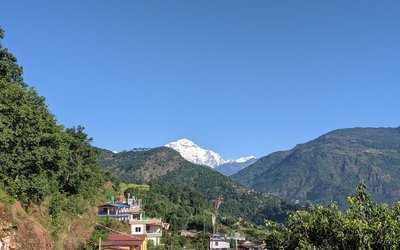A new study of a major urban safety campaign launched by the UN two years ago has found that political leadership is more important than a city’s wealth when it comes to protecting the lives and economic assets of cities and towns from disasters.
The “Making Cities Resilient Report 2012” provides a global snapshot of how local governments reduce disaster risk and was undertaken by a team from the London-based International Institute for Environment and Development led by Senior Fellow, Dr. David Satterthwaite.
Dr. Satterthwaite said: “The Making Cities Resilient campaign is proving that despite a rise in extreme weather events and the threats posed by climate change, urbanization does not have to lead to an increase in risk. Where city and local governments demonstrate leadership and competence in working with low-income populations living in informal settlements flood impacts can be reduced and the threats from other natural hazards minimised.
“Cities which understand how to prevent recurring losses will thrive and the campaign is motivating over 1,000 cities and towns to get a better handle on how to reduce their risk and avoid loss of life and damages.”
The Making Cities Resilient Campaign was launched by the UN Office for Disaster Risk Reduction (UNISDR) after it was announced that for the first time in human history over 50% of the world’s population now live in cities and urban areas. The majority of the 200 million people affected by floods, earthquakes and other natural hazards each year are urban dwellers.
The campaign now has 1,050 members ranging from major metropolises such as San Francisco, Copenhagen, Cape Town and Mumbai to small towns in countries such as Austria and Pakistan.
The campaign asks members to sign up to Ten Essentials for urban disaster risk reduction. The new study includes interviews with mayors and city managers from around the world and finds that for the majority the most important “essential” is putting in place the organisation and coordination to understand and reduce risk.
The UN Special Representative for Disaster Risk Reduction, Margareta Wahlström, launching the report today at the World Urban Forum in Naples, said: “Economic losses to disasters have averaged at least $100 billion annually over the last twenty years. Most of this damage can be avoided through better risk management and investment in social and structural infrastructure.
“The 40-plus cities profiled in this report were able to leverage whatever resources they had including the creativity of their citizens to reduce the impact of disaster events on their communities. Six months after joining the campaign the local government of Siquirres in Costa Rica took action on flood protection and in February 2012 the usual annual flooding was avoided. There are many cities like Siquirres which are proving that if you manage your risks, you build your resilience to disasters and avoid unnecessary disruption in the home and the workplace.”
Report author, Dr. Cassidy Johnson, of University College, London, said: “The straightforward simplicity of the Campaign’s Ten Essentials is a key strength of the Campaign. These guidelines provide local leaders with a strategic framework to prioritise areas and approaches to disaster risk reduction and to chart progress.”
UNISDR Campaign Director, Helena Molin-Valdes, said: “The Campaign provides a critical forum for local authorities to raise awareness, learn about disaster risk reduction, share ideas and identify solutions. The association with an UN-affiliated global Campaign gives local authorities a sense of empowerment which usually translates into tangible actions and policies.”
Across all the cities analysed in this report, the five types of activities occurring most frequently are: taking disaster risk reduction into account in new urban planning regulations, plans and development activities; establishing councils/committees/disaster management structures dedicated to disaster risk reduction, constructing hazard-resistant infrastructure or improving existing facilities; stablishing education/awareness/training programs and citizen participation/ multi-stakeholder dialogues.
Another important trend is the extent to which cities are integrating disaster risk reduction into other local government activities, including education, livelihoods, health, environment, and planning, either by incorporating risk considerations into existing activities or initiating projects that address multiple issues simultaneously.
- TANAHU HYDROPOWER PROEJCT: A Significant Achievement
- Apr 15, 2024
- AMBASSADOR HANAN GODAR: Sharing Pain With A Nepali Family
- Mar 30, 2024
- VISIT OF KfW AND EIB TO NEPAL : Mission Matters
- Mar 25, 2024
- NEPAL BRITAIN SOCIETY: Pratima Pande's Leadership
- Mar 24, 2024
- NEPAL ARMY DAY: Time To Recall Glory
- Mar 15, 2024















